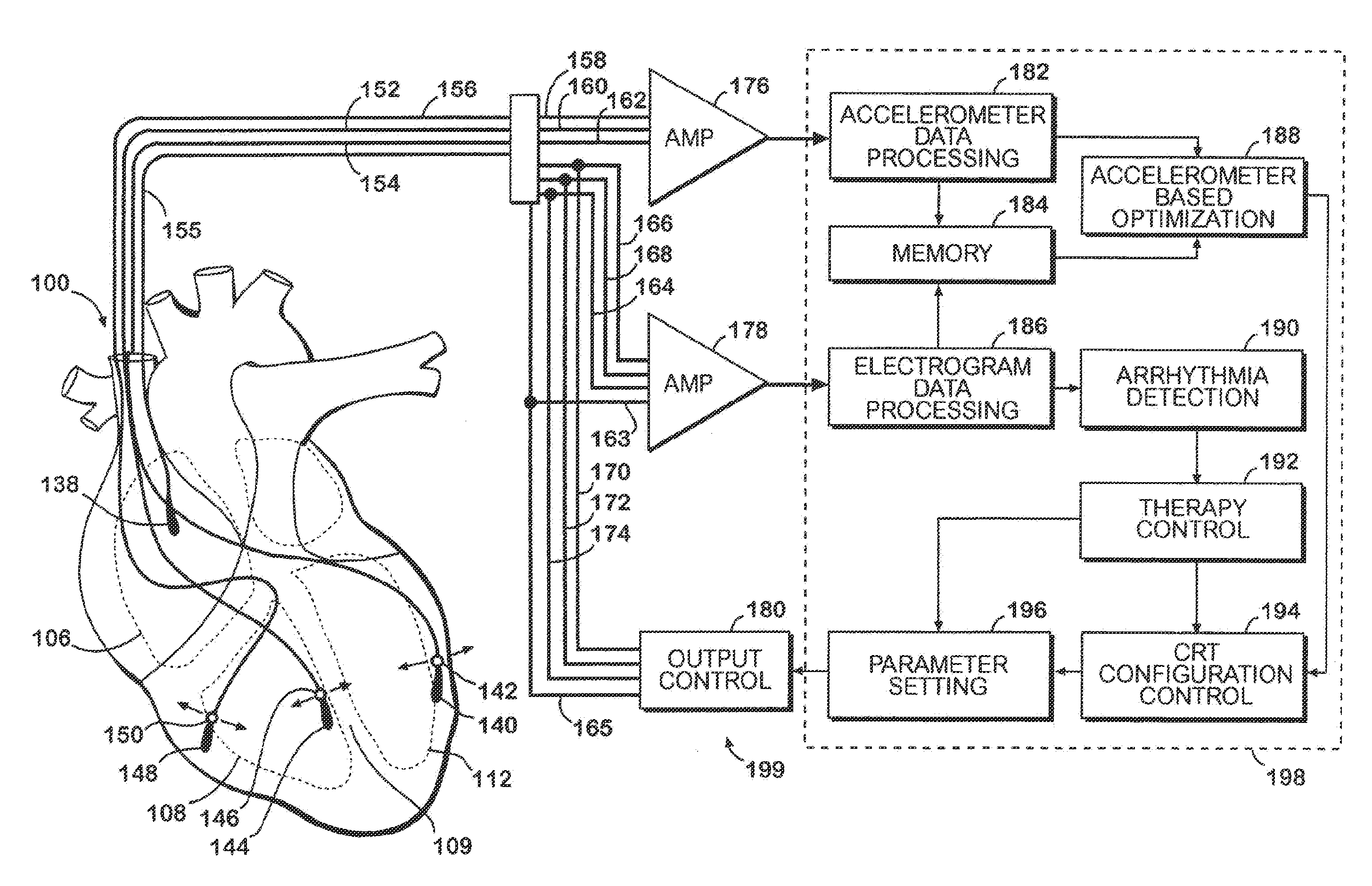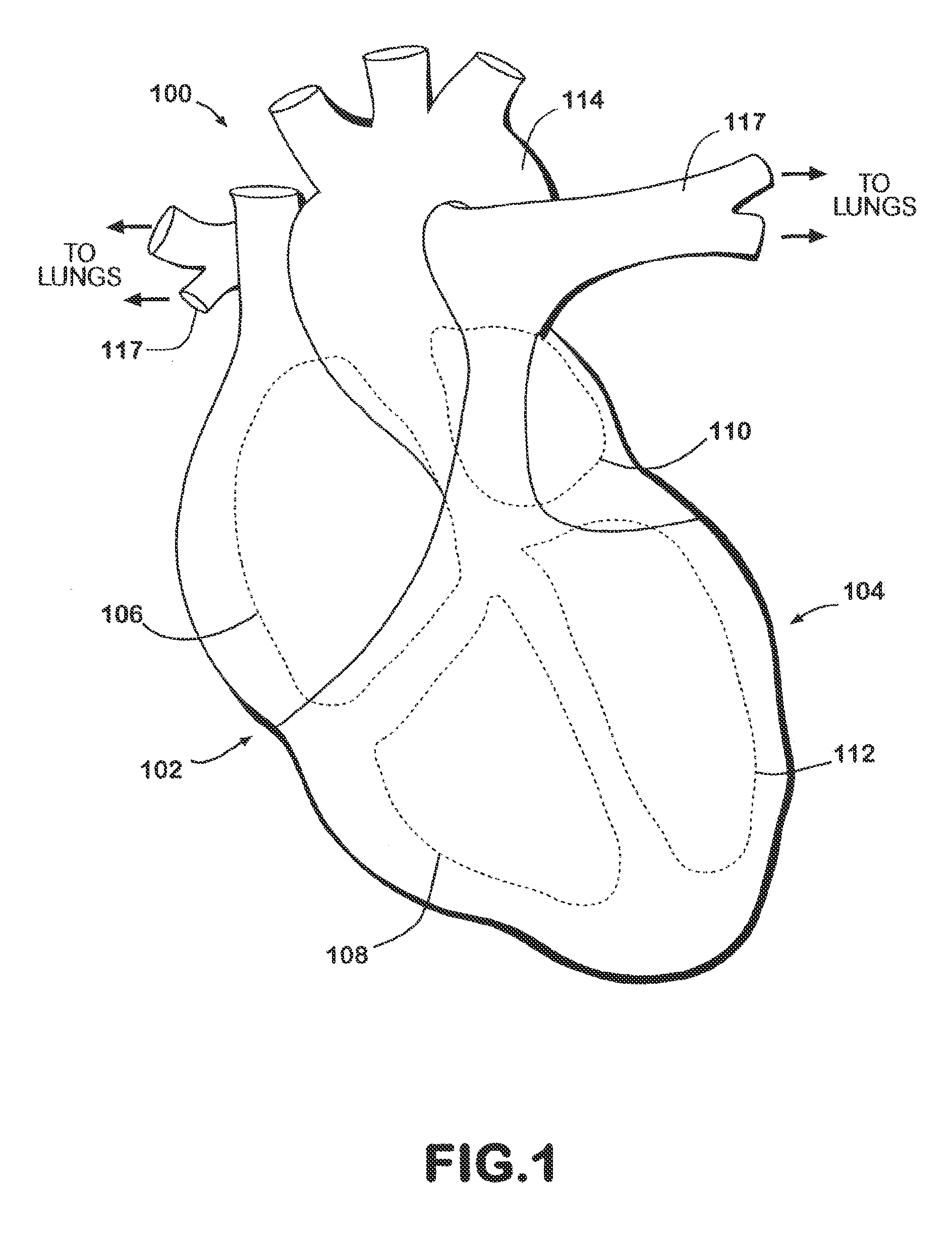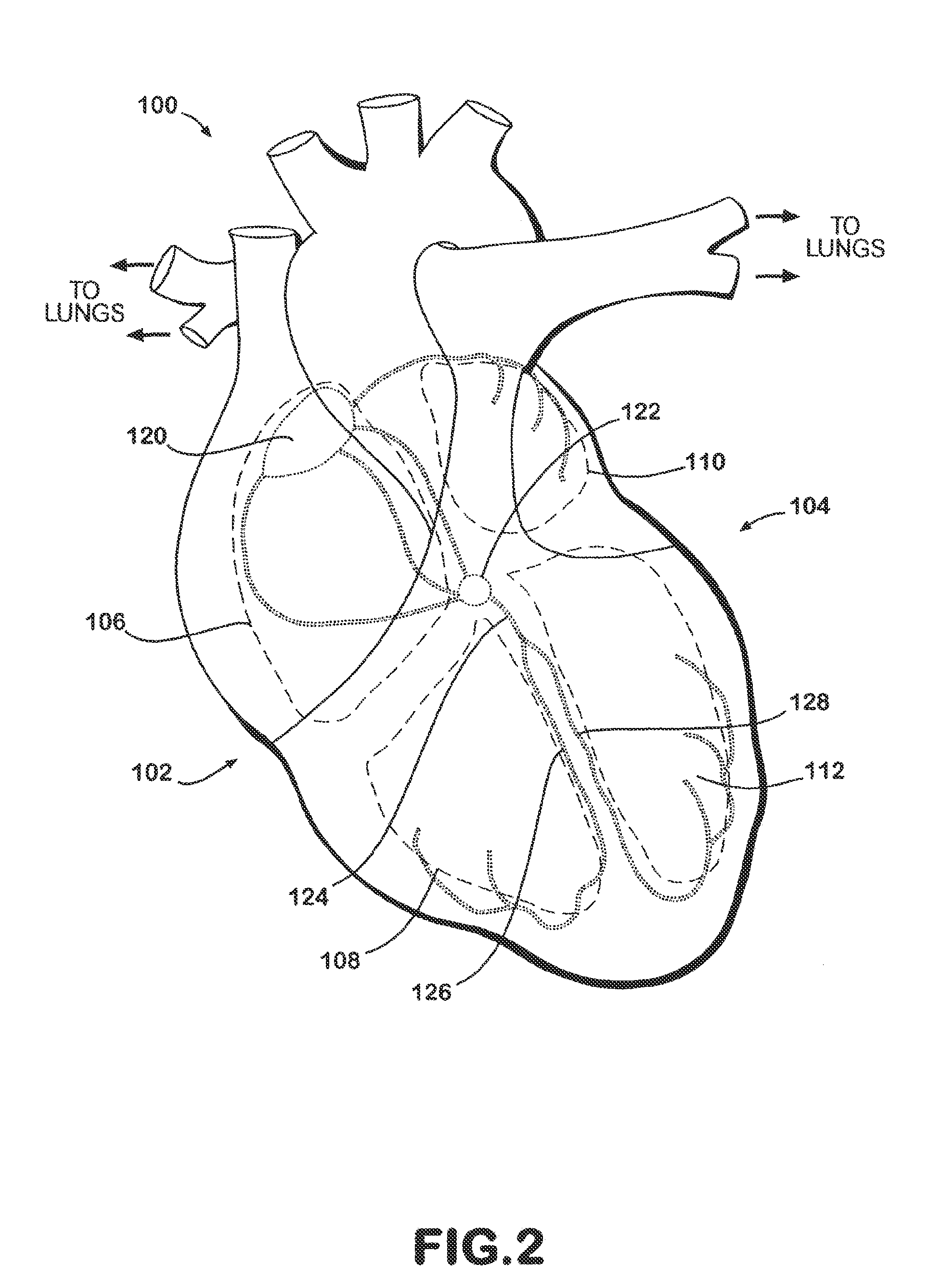Cardiac resynchronization system employing mechanical measurement of cardiac walls
a mechanical measurement and resynchronization technology, applied in the field of cardiac resynchronization systems, can solve the problems of insufficient ventricular relaxation and filling, inability to know the success of stimulation signals in terms of mechanical response of ventricles, and inability to control the mechanical response by only measuring electrical activity
- Summary
- Abstract
- Description
- Claims
- Application Information
AI Technical Summary
Problems solved by technology
Method used
Image
Examples
Embodiment Construction
[0024]Various embodiments of the present invention will be described in detail with reference to the drawings, wherein like reference numerals represent like parts and assemblies throughout the several views. Reference to various embodiments does not limit the scope of the present invention, which is limited only by the scope of the claims attached hereto.
[0025]Embodiments of the present invention provide CRT optimization through analysis of signals produced directly by motion of the ventricular walls. Accelerometers can be placed within electrode leads routed to the various ventricular wall locations and can enable continuous and automatic optimization of the CRT device based on the direct mechanical measurement from the accelerometer for each cardiac cycle.
[0026]A CRT device 199 in accordance with one embodiment of the present invention is shown in FIG. 3. The CRT device 199 includes a processing module 198, which may include several sub-modules and memory 184 for implementing CRT...
PUM
 Login to View More
Login to View More Abstract
Description
Claims
Application Information
 Login to View More
Login to View More - R&D
- Intellectual Property
- Life Sciences
- Materials
- Tech Scout
- Unparalleled Data Quality
- Higher Quality Content
- 60% Fewer Hallucinations
Browse by: Latest US Patents, China's latest patents, Technical Efficacy Thesaurus, Application Domain, Technology Topic, Popular Technical Reports.
© 2025 PatSnap. All rights reserved.Legal|Privacy policy|Modern Slavery Act Transparency Statement|Sitemap|About US| Contact US: help@patsnap.com



